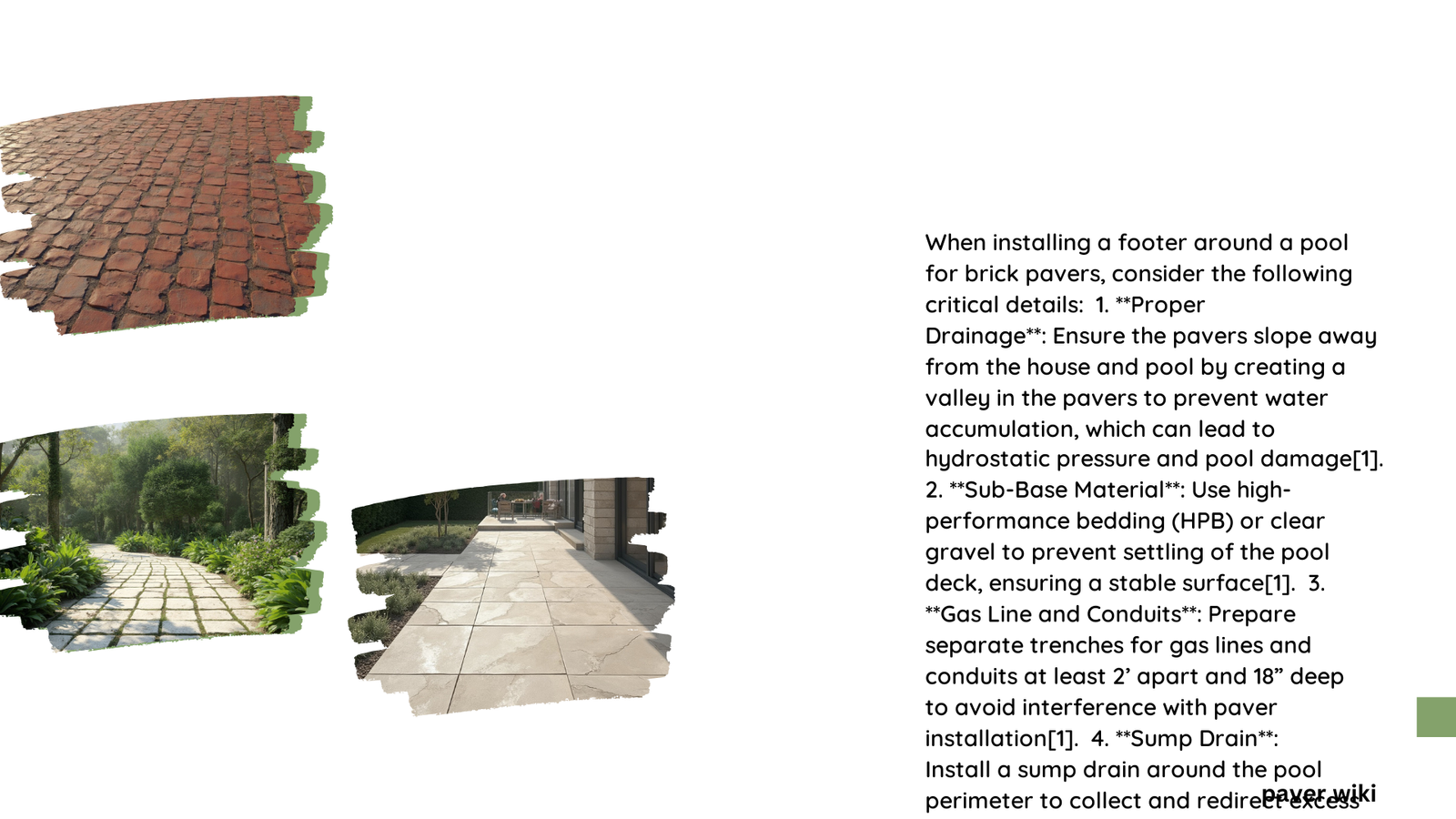Creating a robust and aesthetically pleasing footer around a pool with brick pavers requires meticulous planning, precise engineering, and strategic material selection. Homeowners and contractors must consider multiple factors including soil bearing capacity, structural integrity, drainage requirements, and aesthetic design to ensure a long-lasting and functional pool border that withstands environmental challenges and provides optimal performance.
What Makes a Footer Critical for Pool Paver Installation?
A footer around pool for brick pavers serves as the foundational support system that distributes weight, prevents structural shifting, and ensures long-term stability. Unlike standard landscaping projects, pool areas demand heightened structural considerations due to constant water exposure, significant load-bearing requirements, and potential ground movement.
Why Proper Footer Dimensions Matter?
| Footer Characteristic | Recommended Specification |
|---|---|
| Minimum Width | 12-16 inches |
| Typical Depth | 8-12 inches below finished grade |
| Recommended Base Material | Compacted crusher-run gravel |
| Reinforcement | Rebar for additional strength |
Key Structural Considerations
- Soil Analysis
- Conduct professional soil testing
- Determine bearing capacity
- Identify potential drainage challenges
-
Assess frost line depth in your region
-
Load Distribution Factors
- Calculate total pool water weight
- Consider additional structural loads
- Plan for potential ground movement
- Account for seasonal temperature variations
How to Prepare the Footer Base?
Proper base preparation remains crucial for a successful footer installation. Follow these systematic steps:
- Excavation
- Remove existing soil carefully
- Ensure level ground surface
-
Create consistent depth across installation area
-
Base Layer Composition
- Use 4-inch compacted gravel base
- Select angular crushed stone
- Compact in 2-inch increments
- Achieve 95% standard proctor density
What Drainage Solutions Enhance Footer Performance?
Effective drainage prevents water accumulation and potential structural damage. Implement these strategies:
- Install perforated drainage pipes
- Create 1-2% gradient away from pool
- Use permeable base materials
- Consider French drain systems for complex landscapes
How to Select Appropriate Brick Pavers?
| Paver Characteristic | Recommended Specification |
|---|---|
| Minimum Thickness | 2 inches |
| Compressive Strength | 8,000+ PSI |
| Surface Texture | Non-slip |
| Material Resistance | Chlorine and salt tolerant |
Installation Best Practices
- Start from pool center
- Maintain consistent alignment
- Use polymeric sand for joint stabilization
- Compact pavers systematically
- Ensure proper edge restraints
What Maintenance Techniques Preserve Footer Integrity?
- Annual base inspection
- Reseal joints every 2-3 years
- Monitor for potential settlement
- Address drainage issues promptly
- Replace damaged pavers immediately
Conclusion

A meticulously designed footer around pool for brick pavers represents a critical investment in long-term landscape durability. By understanding structural requirements, implementing proper drainage, and selecting high-quality materials, homeowners can create a stunning and resilient pool border.
Reference:
– Concrete Footing Guidelines
– Paver Installation Best Practices
– Drainage Solutions for Hardscaping
